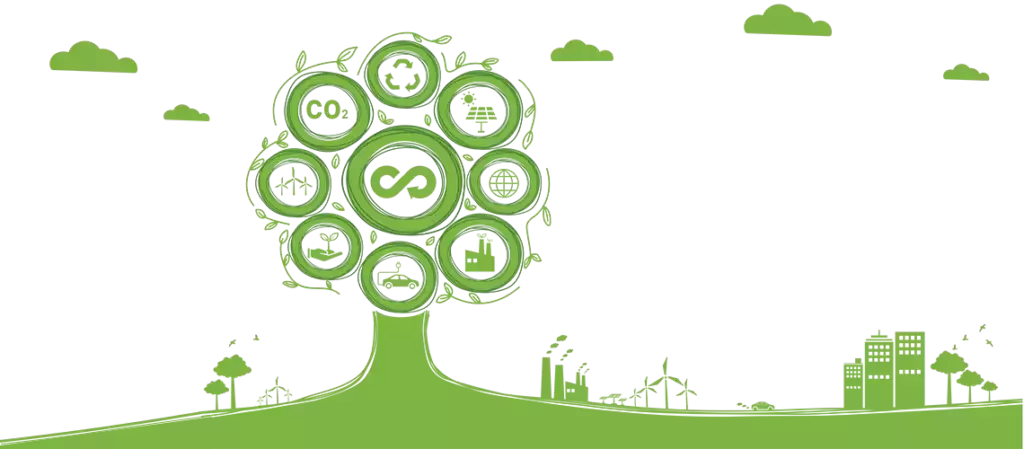Inflation and the ecological transition: A European perspective
There is a link between the ecological transition and inflation. The acceleration of the former makes prices grow, especially when a war breaks out involving producers of important raw materials. Taking a European perspective, the risk is a slowdown in mitigation policies.

Inflation and the ecological transition
The pandemic and the geopolitical developments of recent years have undermined the deflationary trend that had characterized the global economy since the financial crisis of 2007–09, disrupting the economy on both the demand and supply sides. Over the past year, world inflation has increased from less than 2% to over 6% and remains above the targets of central banks almost all over the world.
In the context of climate change, which is increasingly critical, it is important to understand the relationship that links inflation and the ecological transition and how policies for the ecological transition can intervene to calm future tensions on prices.
Recent Posts:- Watch Bhagavanth Kesari (भगवंत केसरी) 2023 480p 720p 1080p in Hindi
- Cafe Coffee Day: Brewing Innovation in the Digital Promotional Token Universe powered by Simplyfy
- The Best Sex Toys for Every Body
- How to download Bhagavanth Kesari (भगवंत केसरी) 2023 480p 720p 1080p in Hindi
Impact of the ecological transition on inflation
There are several channels through which climate change can sustainably raise prices. The frequency of extreme climatic events (such as fires, floods, and extreme changes in temperature) that have a significant impact on the prices of certain goods (climateflation), especially food and energy, has increased, also due to disruptions in supply chains and higher insurance premia. The increase in temperatures and pollution-related diseases also deteriorate human capital and cause a reduction in productivity and economic efficiency levels (all else being equal). Recent European Central Bank research has highlighted how inertia in combating climate change can lead to structurally higher inflation (up to half a percentage point annually), concluding that a well-managed ecological transition would minimize the inflationary impact of global warming. This is first because the impact would be temporary, and then because the frequency of extreme events would tend to decrease, thereby reducing the costs associated with the mitigation of their effects (ECB 2021).
Higher taxation of fossil fuels (for example, the carbon border tax) and the rise in the price of emissions announced by the European Commission in its Fit for 55 package under the Emission Trading System1 will be partly passed on to consumers and enterprises, leading to an increase in production and consumer prices.
Moreover, during the transition, the demand for some energy sources (for example, natural gas) will grow significantly, especially if the emerging market economies accelerate the transition from coal. Furthermore, the acceleration of the ecological transition employing “mineral-intensive” technologies is generating a booming demand for raw materials, especially the “critical” ones (tin, aluminium, copper, nickel, cobalt, as well as “rare earths”) — highlighting their economic importance and the risk that underpins their supply. The markets for minerals will not be able to satisfy the demand in the short term, especially considering that the supply is concentrated in the hands of a few (geopolitically relevant) players, including China. This year, the prices of metals that are essential for green technologies have risen between 20% and 91% (greenflation).
In addition, the war initiated by Russia in Ukraine has exacerbated tensions. Given the significant weight of both countries as global suppliers of raw materials, the conflict takes a significant share of the world production of these resources from the market. Should the conflict continue, the increase in the prices of raw materials would remain sustained in the long term.
Impact of inflation on the ecological transition
The more urgent and faster the green transition becomes, the more expensive it will turn out to be. It is also possible that the authorities will be reluctant to intensify the transition for fear of the higher costs that would be passed on to households and businesses already burdened by higher inflation. It is no mystery that the authorities are reluctant to adopt measures such as taxation of carbon emissions or financial regulations for managing climate risks. Furthermore, the rising anti-inflationary sentiment and policies of central banks worldwide may discourage the private investments that are necessary to make the transition happen.
True, there are compensatory factors at play. Among these, the circular economy will exert a dampening effect on future price trends (this is explained in part II of the blog post). Yet, extracting the full benefits from the circular economy will require time and firm and forward-looking public action.
The authors of this blog post are experts of the Public Investment Evaluation Unit at Italy’s Presidency of the Council of Ministers, coordinated by co-author Maria Elena Camarda. The blog post is an abstract from a broader report that the authors prepared for the Presidency on energy, commodities, and inflation in the context of sustainable development. The views expressed in the blog post reflect those of the authors only and do not necessarily reflect the views of the Presidency or the other institutions with which the authors are affiliated.
